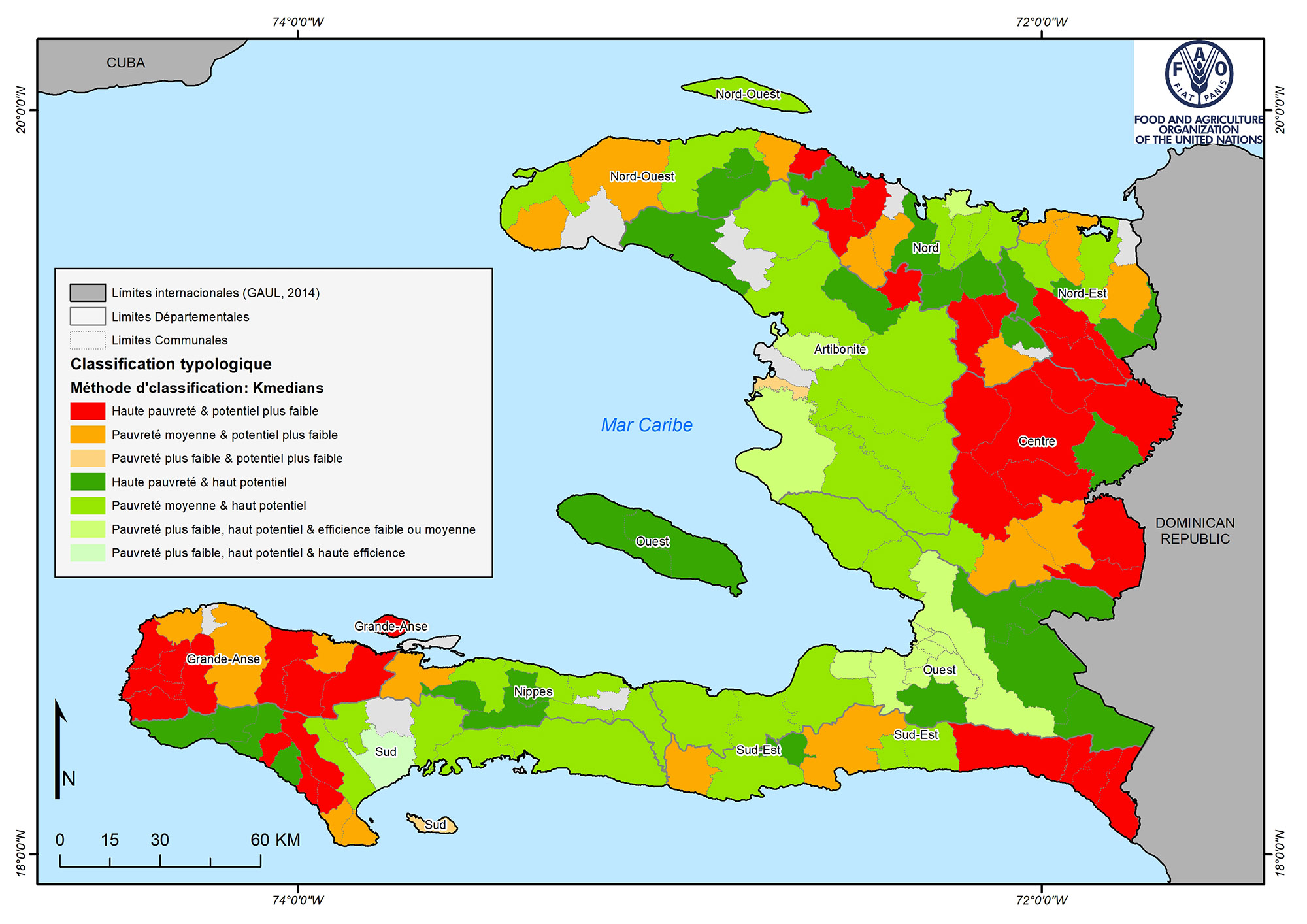Haiti |
THE PROPOSAL
In Haiti, the Hand-in-Hand Initiative supports investments in five specific communes in the Southeast region: La Vallée, Bainet, Cayes-Jacmel, Marigot and Jacmel. These communes have great potential for increasing agricultural production or productivity, as well as for return on investments and development.
The Government has prioritized communal sections and value chain for yam to strengthen local agriculture. The decision was made in coordination with the Direction Départementale Agricole (DDA) du
Sud-Est, and in consultation with other key actors in the department and
communes.
The goal is to improve the food security of rural families in a sustainable manner. For the yam value chain, it is a matter of increasing agricultural productivity, creating value addition through increasing processing capacity and access to markets.

COMMODITIES AND INTERVENTIONS
Yam
Yam is the third most produced crop in Haiti, after bananas and potatoes. The Southeast is the third region that produces the most yam in the country. In the five targeted communes, the area sown to yam is 639.1 hectares, which represents 10,482 farms. Also, yam is a key crop within agroforestry systems, particularly because it serves as a plant cover, in addition to having an important role in food security and household income and resilience.
Interventions:
- Ensuring access to quality seedlings through conservation of good quality yams for distribution
- Producing quality seedlings
- Training seed, fertilizer and pesticide producers and farmers
- Increasing institutional support to the Bureau Agricole Communal
- Making available technology packages, including equipment, appropriate for local production systems
- Creating local input and sustainable seed companies, involving young people, women, associations and private companies
- Holding cooking workshops, chemical analysis and developing nutritional guidelines
These interventions focus on 500 hectares of yams in the southeast region, identified by Directions Departementales Agricoles, or DDA. Specifically, the areas have 300 hectares of agroforestry yams and 200 hectares of full sun yams. There are 1,500 smallholder farmers who work on the areas. The investments are expected to increase yields from 4,650 kg/ha to 8,680 kg/ha for agroforestry yams and from 6,200 kg/ha to 15,000 kg/ha for full sun yams. They would also encourage the adoption of improved varieties and improve crop management, soil management and other agronomic practices through four technology packages.
The interventions will also support yam seedling producers by providing them with access to finance and training in accounting. They would build farmer field schools and provide plot demonstrations, and also establish two yam variety collections.
With these interventions, the value of production could more than double in five years (150%), from US$1.97 million to US$4.92 million in the fifth year for the full-sun yam production system. For yam under agroforestry, the value of production could almost double in five years (87.3%), from US$1.5 million to US$2.81 million in the fifth year of the intervention.
The overall budget of the intervention is US$5.8 million over a 5-year period. The investment's net present value is US$1.2 million, and the internal rate of return is 17.5%.
Highlights
In Haiti, the Hand in Hand Initiative was officially presented to the government on the 9th of December 2020. Since then, FAO has created a data-driven typology of agricultural microregions in Haiti, which facilitates the process of identifying the needs specific to each territory, and thus helps to better guide investments. On this basis, FAO, in collaboration with the Ministry of Agriculture, Natural Resources and Rural Development (MARDNR), has finalized an investment note on yam which was presented during the HiH's first investment forum held October 18-19, 2022, in Rome, and is currently finalizing an investment note on coffee. Both investment notes are focused on the South-East department, as identified through the typology approach. Through TCP, FAO is funding a project to support the Initiative and aims to establish partnerships with financial institutions to strengthen the support. In addition, other projects adopt a similar methodology and hence contribute de facto to HiH.

